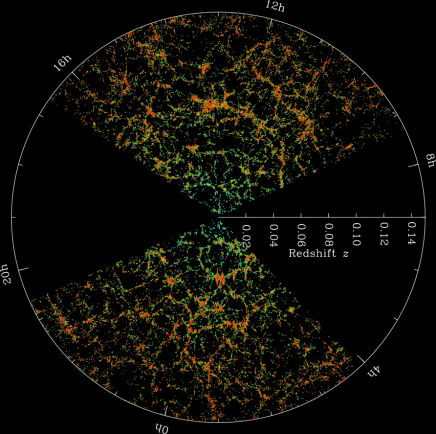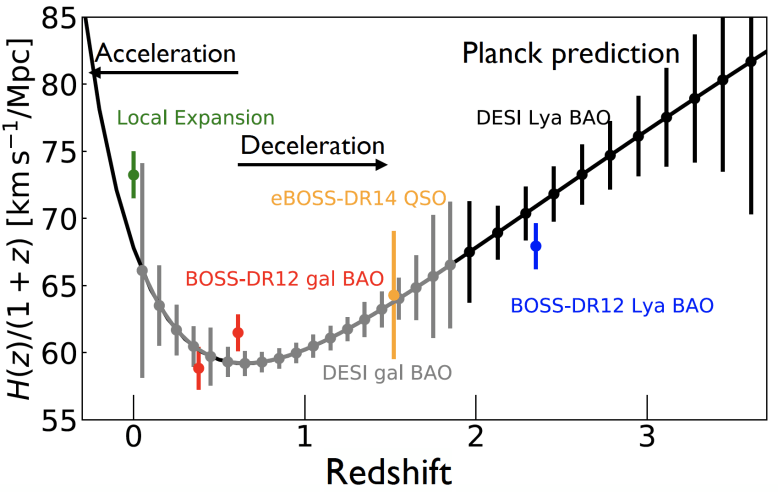My research focuses on the study of cosmology using the large scale structure of the Universe. I seek to answer one of the most fundamental questions within the field of fundamental physics and
cosmology in the last 20 years: what is driving the late-time accelerated expansion of the Universe. In order to answer this question, astronomers have been surveying the cosmos during the last 30 years locating the most bright and luminous galaxies at different distances and epochs. Using galaxies and neutral hydrogen gas as tracers of the underlying matter structure of the cosmos,
we have been able to understand how the Universe has been expanding since it origin, 14 Gyr ago. In addition, the study of the cosmic microwave light and nearby Supernovae have complemented the picture of this expansion. One of the most striking conclusions is that this expansion has been decelerating during the first half of the Universe's age, and started to accelerate during the second half, 7Gyr ago. Direct measures of the current expansion rate using the dimming light of nearby Supernovae indicate that the distant galaxies are currently expanding at 73 km/s/Mpc.


